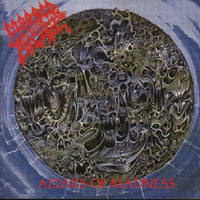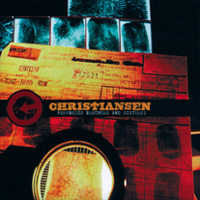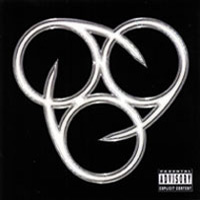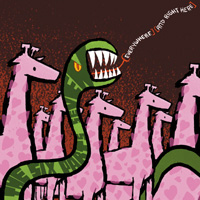 Morbid Angel
Morbid Angel
Altars of Madness (Earache)
by Tim Den
The unique, mystical, and disturbing chaos of Morbid Angel has inspired countless bands around the world over the years, and it all started with these two albums (newly reissued with multimedia content, extra tracks, and new liner notes). No other band before them had taken metal riffing to such inexplicable depths; creating a black hole/warp space in audio that literally rung the wet rag of guitar playing dry. Guitarist/band leader Trey Azagthoth’s unconventional – almost impossible – method of shoving random notes and melodies onto a friction train conjured up feelings of unease like no other extreme metal band… as if the H.R. Lovecraft-inspired lyrics really were physically manifesting demons behind you as you listened. The sonic brutality, coupled with the madenning creepiness and other-worldly descriptions… Morbid Angel were (and still are) one of a kind.
It began with Altars of Madness, the debut that made them the hype band of the genre (along with Entombed’s Left Hand Path). Without a doubt the band’s rawest and fastest album, it pleased fans with its brute force but also gained notoriety for its eerie compositions. The vortex of its speed never took away from the anchor of dread that locked around your ankles, as it dragged you deeper into its haunted wombs even as the riffs raged on. Naturally, the band turned up green in a few spots (signature song “Chapel of Ghouls” – though catchy and spooky – contains some leftover, laughably amateur lyrics from ex-drummer/vocalist Mike Browning), but all in all, Altars of Madness presented a fresh take on the then-emerging genre of death metal.
But it wasn’t until the follow-up, Blessed Are the Sick, that the world got a glimpse of the behemoth to come. Kicking off a long-standing tradition of defying expectations, the sophomore album sounded nothing like the debut. Gone were the raw production, slightly-Satanic lyrics, and (for the most part) lightning speed. In their place trudging doom, Mesopotamian allusions, and a slicker-than-spit-shine production bound together the band’s creepiest release. Reaction to the album, as expected, was mixed. Most death metal bands at the time hadn’t so boldly transformed themselves (in such a short time, no less), and some fans quickly showed their disapproval. Some said it was too slow, some said it sounded too clean, some balked at the inclusion of several keyboard/acoustic guitar instrumentals… but the band gave no heed. They believed Blessed Are the Sick to be just another step toward their expansion and maturation, and time would prove them right. In hindsight, this was the album that first introduced the almost-hallucinogenic lyrics, the dead-weight dirge of hits-to-come (“God of Emptiness” in particular), and bassist/vocalist David Vincent’s forray into well-pronounced growling. Opener “Fall From Grace” summed up the album perfectly: Whispers and demon screams reciting ancient torment from speaker to speaker, full-bodied riffs filling out the beast’s innards, and crystal-clear drumming taking technicality to new heights. Every crawling chug, every blastbeat was captured perfectly for scrutinizing, as the band took everything they learned from Blessed Are the Sick into future albums. And though some fans might be correct in accusing the album of lacking catchiness, the characteristics that the band discovered here would be crucial to their eventual identity.
A balance of Altars of Madness‘ blitzkrieg and Blessed Are the Sick‘s netherealm quality would reap Covenant and Domination in the following years, as the band perfected their blend of crystaline aural assault. Vincent’s vocals would become the most commanding in all of death metal, and Azagthoth’s songwriting would finally realize the potential of “awkwardness = catchiness.” But, of course, Altars of Madness and Blessed Are the Sick will always be remembered for planting the first seeds, and for introducing a genre-defining (and redefining) band to metal fans.
(43 West 38th St. 2nd Fl. New York, NY 10018)



